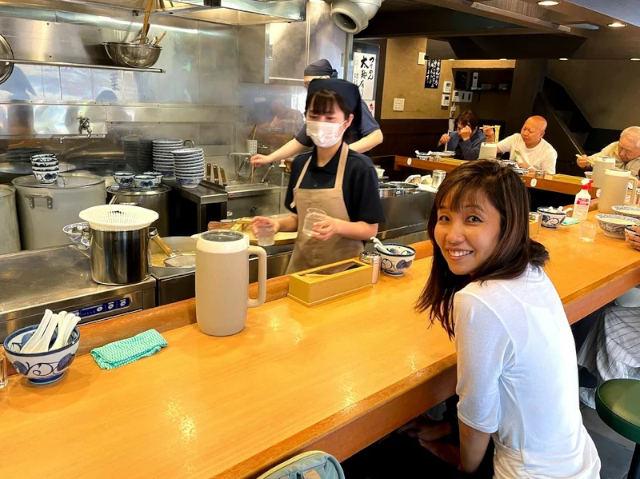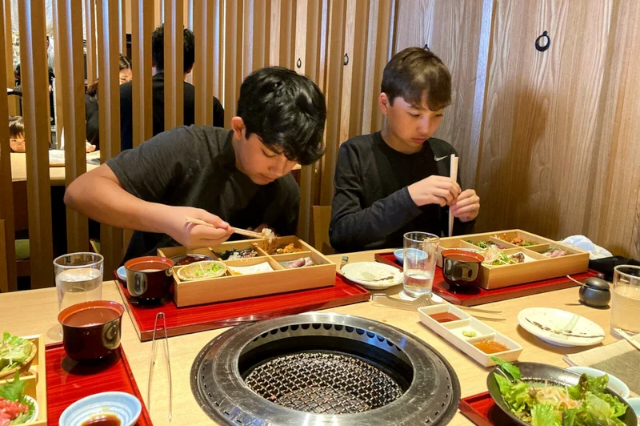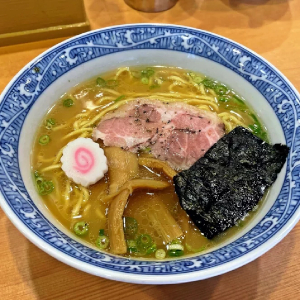I took the time to read carefully a long NPR article by a writer of Japanese extraction who discovered some interesting differences in Japanese and American eating habits. On reflection, she recommends the Japanese way…
 Yuki Noguchi at a typical Japanese diner during a recent trip to her parents’ birthplace.
Yuki Noguchi at a typical Japanese diner during a recent trip to her parents’ birthplace.
Yuki Noguchi is a young health and wellness writer who was born in the U.S. Midwest and a special interest in the dining and living styles of Japan.
She recently visited the islands of her parents’ birth and discovered something interesting. Japan and the U.S. are both highly developed and prosperous countries But, ‘they occupy opposite ends of the obesity spectrum’. Guess who comes in on the light side?
Amazing numbers
According to official figures, 43 percent of the U.S. population suffers from obesity — nearly 10 times Japan’s rate of 4.5 percent.
Noguchi asked Terry Huang, a health policy professor at the City University of New York, ‘why?’. He offered various reasons, most of which can be traced back to Japan’s cultural history.
Huang says Asian countries generally ‘place greater emphasis on health and longevity, as compared to convenience, say, or instant gratification’.
Default design
Huang credits the low obesity rate in Japan with social factors, too.
First of all, he says Japanese people walk a lot more than North American folks do. On a recent visit to Japan, Noguchi shadowed her parents for a week noting the stats and activity patterns her parents’ daily comings and goings produced.
First and foremost, she noted that her folks customarily walk about 6 miles / 9.6 km a day. Many Japanese don’t have cars. They rely more on public transit and walking for getting to work, attending school and appointments, and shopping. The walking alone can account for a significant part of their healthy lifestyle and their low obesity rate.
Food preferences
Another factor is the natural Japanese cultural preference for fruits and vegetables over meat – especially red meat – in their diets.
“Eating is a raging national obsession here, with good reason,” Noguchi observes. “Staggering varieties of food are available everywhere; it’s all delicious and — most impressively, to me — always fresh.” Traditional Japanese ‘Fast Food’ is usually made to order, from fresh ingredients.
“Soba noodles come made to order, with flash-fried seasonal tempura vegetables (see photo, top of page). Mouthwatering sushi and curry rice lunches are sold on train platforms. You can wander past cases of specialty foods, from marbled meats to miso-pickled vegetables to handmade gyoza dumplings, in the depa chicka, or department store basements.
A companion factor is that the Japanese tend to show more respect for their food than European and North American diners.
“There’s a slavish devotion to the gourmet that might seem crazy anywhere else. In summer months, domestic peaches come boxed in cushions to protect flesh as delicate as a baby’s cheek.”
A cultural constant
The Japanese culture ‘bakes in’ respect for food starting with elementary school.
 Japanese elementary school students participate in the making
Japanese elementary school students participate in the making
– as well as the eating – of their school provided lunches.
“One key factor my mom reminds me of — and many researchers point to — is the Japanese school lunch,” Noguchi observes. “It is free, scratch-made and balanced, but that isn’t all. Starting in elementary school, lunchtime itself is treated like a class in nutrition, says Michiko Tomioka, a Japanese nutritionist based in New Jersey. Kids serve each other food, help with clean up, and are encouraged to eat everything they’re given.
“That’s not something we could even imagine here [in the U.S.],” she says.
“This lunchtime ritual establishes a common cultural understanding about what healthy eating looks like. Tomioka says. And that’s how it also becomes a habit that endures.”
My take
The Japanese, benefit from their culture and traditions, and the ‘default’ design of their cities. And they typically don’t eat as much as westerners do. They simply don’t suffer from obesity at the shocking rates other industrialized nations do.
Westerners tend to worship convenience, have chosen a sedentary lifestyle, and have developed an addiction-like preference for unhealthy processed foods.
This is a perfect illustration of the old maxim: ‘You get what you deserve’.
~ Maggie J.

